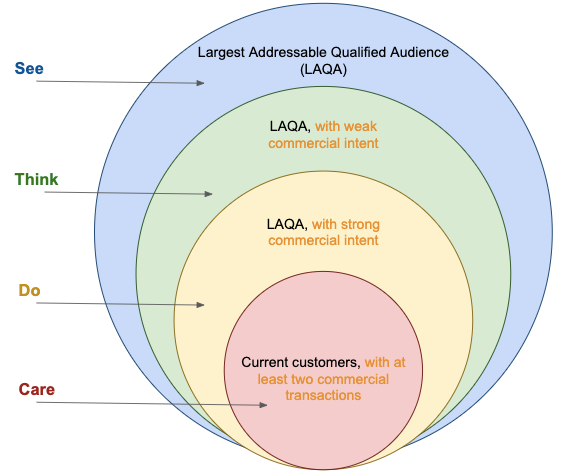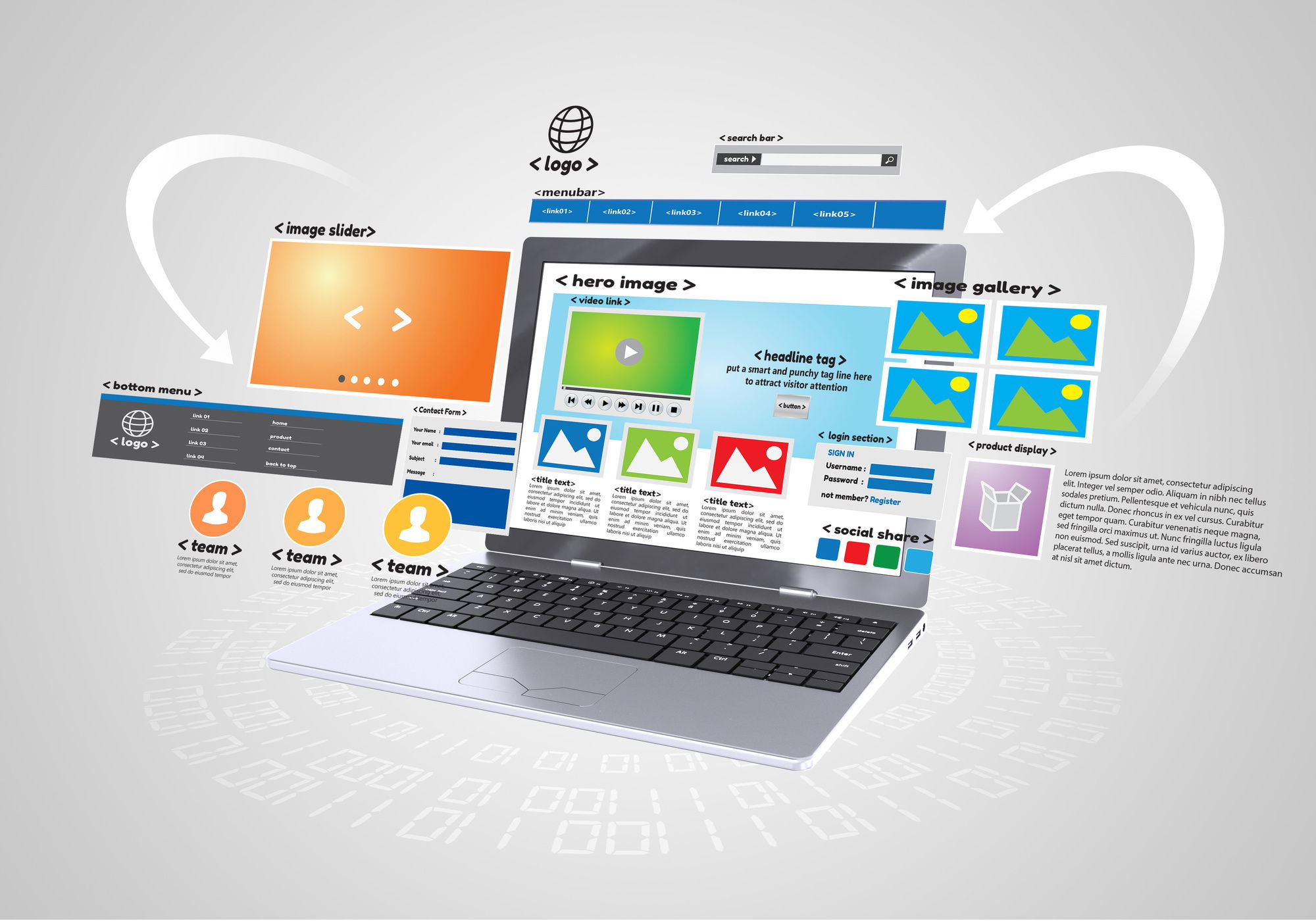Building websites with see think do care content marketing
The See-Think-Do-Care (STDC) methodology is a framework used in digital marketing to understand and cater to different stages of the customer journey. While it is not specific to creating websites, it can be applied to develop websites that effectively engage and convert users.

We will first discuss how you can use the STDC methodology to create intelligent websites. Then we will analyze certain websites which have already done it!
- See Stage:
- Identify your target audience and understand their needs, preferences, and challenges.
- Develop content that attracts their attention and builds awareness.
- Optimize your website for search engines (SEO) to increase visibility.
- Use analytics tools to track website traffic and user behavior to gain insights.
- Think Stage:
- Create informative and educational content that addresses your audience's pain points.
- Offer valuable resources such as blog posts, articles, whitepapers, or videos to establish credibility and expertise.
- Use clear calls-to-action (CTAs) that guide visitors toward the next steps in their journey.
- Implement lead capture mechanisms, such as newsletter sign-ups or gated content, to gather user information.
- Do Stage:
- Provide persuasive and relevant content to encourage users to take action.
- Simplify the conversion process by making it easy for users to complete desired actions (e.g., purchase, sign up, request a demo).
- Optimize landing pages and forms for higher conversion rates.
- Offer incentives or limited-time promotions to motivate users to convert.
- Care Stage:
- Foster ongoing engagement and loyalty with existing customers.
- Provide exceptional customer service and support through various channels.
- Offer personalized recommendations or tailored content based on previous interactions.
- Encourage user-generated content, testimonials, or reviews to build trust and social proof.

To make your website more intelligent:
- Implement data tracking and analytics tools to gather user data and behavior insights.
- Leverage artificial intelligence and machine learning to analyze data and personalize user experiences.
- Use chatbots or virtual assistants to provide instant assistance and enhance user engagement.
- Implement recommendation engines to suggest relevant products, content, or resources based on user preferences and behaviors.
The STDC methodology is not a one-size-fits-all solution, and it's essential to adapt it to your specific business goals, target audience, and industry. Regularly analyze website metrics and user feedback to optimize and refine your website's intelligence and effectiveness.
Many companies have incorporated this framework and you can check their websites to understand how this model effectively communicates and addresses the business and the challenges it faces, through the website!
1.Hubspot
- See Stage: HubSpot offers a wealth of educational resources, such as blog articles and ebooks, to attract users and build awareness of their inbound marketing software.
- Think Stage: They provide in-depth guides and webinars that address various pain points and challenges faced by marketers, establishing themselves as industry experts.
- Do Stage: HubSpot simplifies the conversion process by offering free trials, demos, and clear CTAs to encourage users to sign up for their software.
- Care Stage: They have an active community and customer support system that offers ongoing assistance, training, and personalized recommendations to nurture customer loyalty.
2.Moz
- See Stage: Moz creates comprehensive guides, blog posts, and videos on search engine optimization (SEO) to attract and educate users in the early stages of their journey.
- Think Stage: They offer free SEO tools and resources, like their keyword research tool, to help users further understand and optimize their websites.
- Do Stage: Moz provides various subscription plans for their robust SEO software, making it easy for users to choose a plan that suits their needs and convert.
- Care Stage: They have a community forum, Q&A section, and support channels to assist existing customers and foster ongoing engagement.
3.Amazon
- See Stage: Amazon showcases a wide range of products through personalized recommendations, product categories, and featured deals on their homepage.
- Think Stage: They provide detailed product descriptions, customer reviews, and comparison charts to help users make informed purchasing decisions.
- Do Stage: Amazon simplifies the checkout process with one-click ordering, secure payment options, and seamless delivery tracking.
- Care Stage: They offer personalized recommendations, order history tracking, and excellent customer support to ensure a positive post-purchase experience.
4.Spotify
- See Stage: Spotify promotes their music streaming service through targeted ads, social media campaigns, and partnerships with popular artists to attract new users.
- Think Stage: They curate personalized playlists, recommend new music based on user preferences, and offer a wealth of editorial content to keep users engaged.
- Do Stage: Spotify provides a seamless user interface, easy playlist creation, and various subscription plans to convert users into paying subscribers.
- Care Stage: They send personalized emails, offer exclusive content to loyal users, and provide a robust customer support system to nurture customer loyalty.
These examples demonstrate how different companies have successfully applied the STDC methodology to their websites, addressing each stage of the customer journey and creating intelligent experiences that drive user engagement and conversions.
If you want to create a smart websites for your business that delivers great results, you need to get in touch with Agile Digital Marketing. Schedule a Consultation Now.
